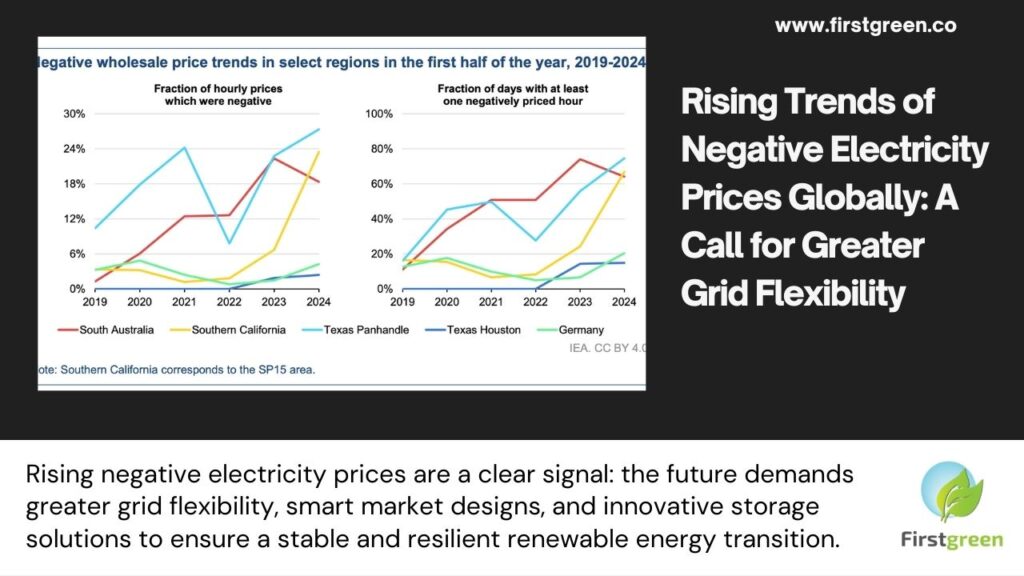
In recent years, the global energy landscape has witnessed a significant shift towards renewable energy sources, driven by the urgent need to mitigate climate change and reduce reliance on fossil fuels. However, this transition has also brought with it new challenges, one of the most pressing being the increasing frequency of negative electricity prices in various regions across the globe.
Understanding Negative Electricity Prices
Negative electricity prices occur when the supply of electricity exceeds demand to such an extent that producers are willing to pay consumers to take the excess energy off their hands. This phenomenon is becoming more common in regions with a high penetration of renewable energy sources like wind and solar, which are inherently variable and sometimes generate electricity when it is not needed.
Global Trends in Negative Electricity Pricing
The trend of negative electricity prices is not isolated to a single region but is being observed across various parts of the world, particularly in markets with a significant share of renewables:
- Southern California: In the first half of 2024, the share of negatively priced hours in Southern California exceeded 20%, a dramatic increase from the previous year. This region has experienced a tripling of negative price events, underscoring the challenges of integrating renewables into the grid.
- South Australia: Since 2023, wholesale electricity prices in South Australia have been negative for about 20% of the time. The region’s high reliance on wind and solar power, coupled with inflexible grid conditions, has led to frequent occurrences of negative pricing.
- Germany: Germany has long been at the forefront of renewable energy adoption, particularly wind power. However, this has also made it susceptible to negative price events. Germany had the second-largest number of negative price events among 25 European countries in 2020.
- France and Switzerland: These countries have also seen negative prices around 5% of the time in the first half of 2024, with Switzerland experiencing prices as low as -400 euros per megawatt-hour on July 14, 2024.
The Indian Context: The Road Ahead
India, which is rapidly increasing its share of renewable energy in the grid, particularly solar, is not immune to these challenges. While the Indian grid has not yet experienced the extent of negative pricing seen in other countries, the potential for such events is rising as renewable capacity continues to grow.
The current structure of India’s electricity market, which includes multiple regional grids and limited storage options, could lead to negative pricing if significant grid flexibility is not introduced.
Addressing the Challenge: The Need for Grid Flexibility
The rising frequency of negative electricity prices is a clear signal that greater flexibility in both supply and demand is urgently needed. Several strategies can be employed to enhance grid flexibility and mitigate the occurrence of negative pricing:
- Demand Response Programs: These programs incentivize consumers to shift their electricity usage to times when supply exceeds demand. In regions with high renewable penetration, encouraging consumers to use electricity during periods of excess generation can help balance the grid.
- Energy Storage Solutions: Battery storage systems can store excess electricity generated during periods of low demand and release it when demand rises. The deployment of large-scale battery storage systems can significantly reduce the occurrence of negative prices.
- Market Design and Regulatory Reforms: Updating market designs to better accommodate the variability of renewable energy is essential. For example, introducing more granular pricing mechanisms or revising curtailment rules could help manage the supply-demand imbalance more effectively.
- Grid Expansion and Upgrades: Expanding and upgrading the transmission grid can help distribute excess electricity more efficiently across regions, reducing local imbalances and the risk of negative prices.
- Cross-border Electricity Exchanges: Enhancing cross-border electricity trading can help countries balance their grids by exporting excess electricity to neighboring regions where demand is higher.
Conclusion
As the global transition to renewable energy continues, the rising frequency of negative electricity prices highlights the urgent need for more flexible and responsive electricity grids. For India, which is on a similar path, proactive measures to enhance grid flexibility, such as implementing demand response programs, deploying energy storage, and updating market designs, will be crucial in ensuring a stable and resilient energy future.